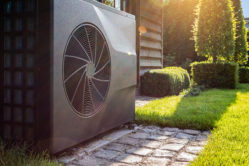Filing your tax returns as early as possible has several advantages. If you are getting a refund, then the sooner you file, the earlier you should receive your refund.
E-filing as early as possible also minimizes the window that criminals have to steal your identity and file a tax return in your name. The IRS will only accept one tax return through e-filing as the original return.
If you have concerns about tax-related identity theft, consider getting an Identity Protection PIN (IP PIN) from the IRS to make it more difficult.
A third advantage is based on what is, for some of us, our natural behavior. When we procrastinate some, it becomes a whole lot easier to procrastinate some more.
I know taxpayers who consistently file a year or two late for the sole reason that they just don’t get around to it. It even happens when taxpayers expect a refund.
Be organized
Have a system for collecting the information and documents used to file your tax return. This may include both electronic and physical methods. I have a folder labeled 2023 taxes already on my computer and a physical folder as well.
Anything I get for tax year 2023 that might impact my 2023 tax returns will go in there. The tax documents I receive for this tax season, the records for tax year 2022, go into the 2022 folders that already have quite a few documents in them.
Collect documents that may have a tax impact but normally don’t. Most taxpayers don’t itemize, so often they aren’t able to take a deduction for charitable contributions.
I always tell my clients to keep contributions documentation, as well as anything else that has been a deduction in the past but isn’t now (like business expenses as an employee). This is because the tax law can change retroactively.
The charitable deduction to taxpayers who didn’t itemize in 2020 and in 2021 is an example of one of these changes (unfortunately, that deduction option has gone away).
Have a checklist
You can often get a good checklist from your tax professional if you have one or from the tax software company that you use for DIY tax preparation. It is a good idea to customize your checklist. I recommend having enough detail that if you aren’t tracking the documents every day, you can still easily see what is not ready for tax preparation.
For instance, if there are 3 W-2s expected, instead of having “3 W-2s” on your checklist, have (as an example): Sandy’s Bakery W-2, Widget Factory W-2, and Tim’s Bait Shop W-2. This way, you can tell at a glance which documents are still not received.
A great place to keep this checklist is where you keep your tax documents and other info needed to prepare your tax return.
One good practice for tax prep checklists is to put a date by which you usually receive the document. If you normally get a 1099-B from ABC brokerage by February 15 and you don’t receive it by February 15, then you’ll know it is time to check on it.
A great baseline for this checklist is the prior year’s tax return and tax documents.
Online access to docs
When possible, maintain online access to tax documents and make sure you know how to access them. This can be difficult when you leave a job or switch financial institutions. It is important to make sure organizations have a current address for you before you leave or switch.
If possible, update them when you move as well. Also, make sure you forward mail when you move.
Typically, you can still have documents mailed and maintain online access if you would like.
Review tax changes while waiting for docs
Reviewing tax changes is particularly important if you DIY your tax preparation. For those with a tax professional, it may be good enough to use a search engine and read a few articles. It is wise to contact your tax professional once or twice outside of tax season and ask if there is anything new for which you should prepare.
For DIY tax preparation, you should go further than your favorite internet search engine. I recommend two methods to see what has changed, both of which are provided by the IRS.
The first is to read the “What’s New” section of IRS instructions and publications that apply to you. For individual taxpayers, this means the 1040 Instructions and Pub 17 at a minimum. For taxpayers with more complicated tax situations, they may want to look at other IRS instructions and publications as well.
A second method to review tax changes is to visit the IRS Newsroom. There is a long list of news and updates there. Plus, if you want news all year, you can subscribe to the IRS newsletters that interest you.
Research anything new to you while waiting for docs
Researching can be a good idea for both DIY tax preparation and if you have a tax professional. For DIY tax preparation, most DIYers are comfortable with handling the same tax situation from year to year.
But if you have a new tax situation, then it can be beneficial to check out the tax software and IRS instructions/publications while waiting for all of your tax documentation. This allows you to spend time making sure you understand the proper way to handle this new situation and complete your tax return more quickly once you receive all your documents.
A simple example may be if you open a taxable brokerage account for the first time. There is a good chance that a 1099-B will be one of the last documents you are waiting to receive. Exploring what a 1099-B looks like, how to read it, and how to apply it to your tax software before you receive it will be beneficial.
For DIY: Check out the software while waiting for docs
It can be helpful to check out the software you plan to use for your tax preparation in advance. Even if it is the same software you used the previous year, there may be changes. It is good to understand what your tax software can and cannot do.
Familiarity with this software can limit errors and speed up the process of the actual tax preparation.
For DIY: Start the tax preparation while waiting for the documents
In some cases, DIY tax preparation can take a lot of time. So the more you can get done while waiting for the last document, the quicker it will be to complete once you receive it.
A word of caution here, though. Anytime you step away from tax preparation before it is finished, make sure you will know exactly what was completed when you come back to it. Also, when you decide you are ready to file, do a thorough review to make sure nothing was missed.
When I step away from my own tax return (or client returns), I write down notes and I highlight docs that have been entered, so I can easily see where I left off.
A final word
While there are very good reasons to get your tax returns filed as early as possible, it is also essential to get them right. Don’t rush to get that refund at the expense of accuracy.
Getting your tax returns done correctly is better than getting them done quickly. It’s best to avoid penalties and interest whenever possible.



About the comments on this site:
These responses are not provided or commissioned by the bank advertiser. Responses have not been reviewed, approved or otherwise endorsed by the bank advertiser. It is not the bank advertiser’s responsibility to ensure all posts and/or questions are answered.